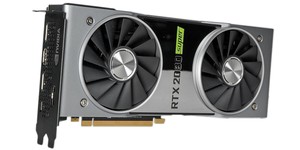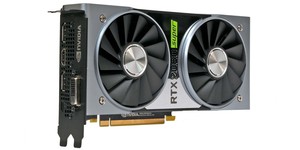
Performance Analysis
Apologies for the lack of The Division 2 results here; Uplay was being a dick, and we couldn’t wait any longer last night. We’ll add in the graphs and update the analysis if necessary when we can.
Update 03/07/2019: We have added in The Division 2 results and updated comparative figures below wherever they have been changed.
At 1080p, the RTX 2070 Super faces little challenge, even from the toughest games on test. It’ll make a great pairing with a high refresh rate monitor if you’d prefer to focus on getting super high frame rates over increased sharpness that comes with higher resolution screens.
Like RTX 2060 Super, we reckon RTX 2070 Super is most comfortable paired with a 1440p monitor. It delivers more throughput at this resolution than its smaller Super sibling by about 18 percent, which will give it a longer lifespan as games get tougher to run. Even in Metro Exodus, our toughest benchmark, it manages minimum/average results of 37.3fps/61.1fps, while other games see it stay consistently above 60fps and average over 100fps.
This card will also make a good go of 4K gameplay, but results in Metro Exodus and Total War: Three Kingdoms where the 99th percentile is around the 25fps mark indicate it isn’t quite capable of full-detail gameplay across the board, and it’ll likely start to struggle fairly soon if you chose this resolution. There is of course the option of adding a second card at a later date, but scaling isn’t always guaranteed with SLI and is highly driver-dependent.

VR headset users can rest assured that the RTX 2070 Super will easily keep their games running fast enough to avoid the literal headaches that come with slower hardware.
Our ray tracing tests in Metro Exodus cause performance hits of 18 percent at 1080p and 23 percent at 1440p. This is significant, but even so gameplay with ray tracing on is still feasible at 1440p, which is impressive. The caveat is that other games could easily see a larger performance penalty, and it really depends on game/driver optimisations and what settings you use.
Across the board, RTX 2070 Super delivers 17 percent more performance on average than RTX 2060 Super (and RTX 2070, since those cards are near enough identical in performance terms). Meanwhile, the outgoing RTX 2080 Founders Edition is only six percent faster overall, and if you recall that’s actually an overclocked card. That’s a small gap, one that manual overclocking can actually overcome, and thus one that some partners might also be able to close with their designs. This shows RTX 2070 Super has done well to make up its core deficit with better clock speeds. On that note, we observed consistent boosting to around 1,875MHz or just under when the card was under sustained load.
The more important AMD comparisons i.e. Navi will have to wait until Sunday, especially as there isn’t really a price-equivalent card in the red team’s stack for the next five days. Still, we see 26 percent higher performance than Vega 64 (an average which disguises inter-game variance, but a clear win nonetheless), and roughly equivalent performance to the more expensive Radeon VII. That latter card claims victory at 4K, but in most games they are quite tightly matched. The exceptions are the DX11-based Total War: Three Kingdoms, which is a clear and heavy win for Nvidia, and the Vulkan-based World War Z, where the opposite is true. Either way, Nvidia dominates here once you factor in price.

The Founders Edition design continues to deliver respectable results in terms of thermals, with a delta T of 46°C being right in line with the other FE cards in the charts and a solid result. Fan speeds of around 1,800 RPM were observed under sustained load, and while this isn’t silent it’s certainly not too loud either, especially considering the size.
Like RTX 2060 Super, RTX 2070 Super consumes a little less power than we expected, at least as far as total system power consumption goes, because it’s lower than RTX 2080 FE despite the two having the same TDP. It’s likely the faster card is adding a bit more CPU load to the mix here.
With the card running comfortably at 2,025MHz when overclocked, we were actually able to surpass the RTX 2080 FE in our testing. Hopefully we’ll see partners doing the same with their high-end offerings of this card. The cooling system coped well with the overclock as well, so you should be safe doing your own tinkering.

MSI MPG Velox 100R Chassis Review
October 14 2021 | 15:04









Want to comment? Please log in.